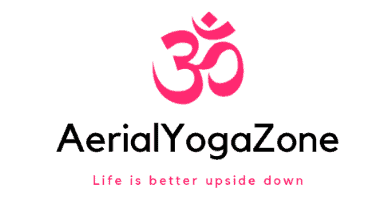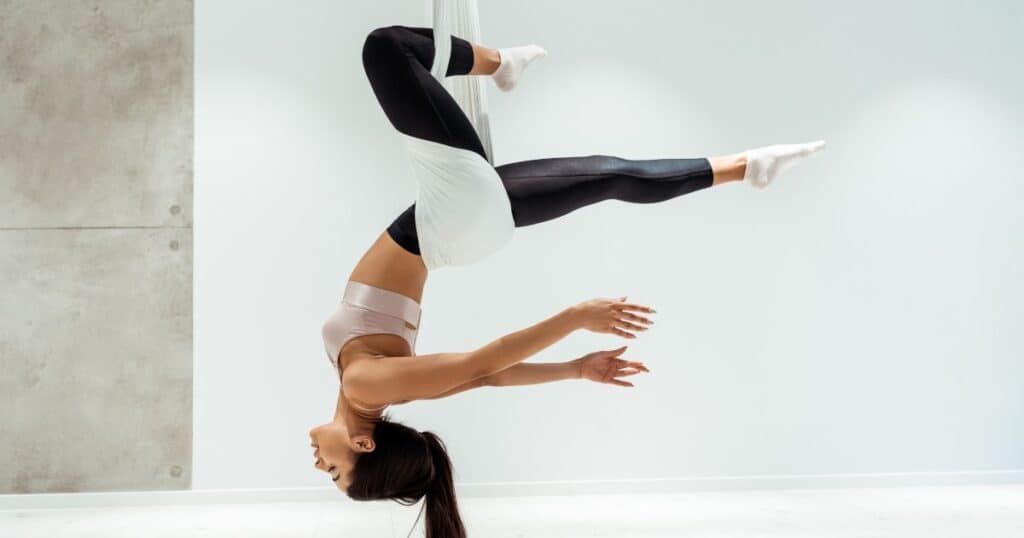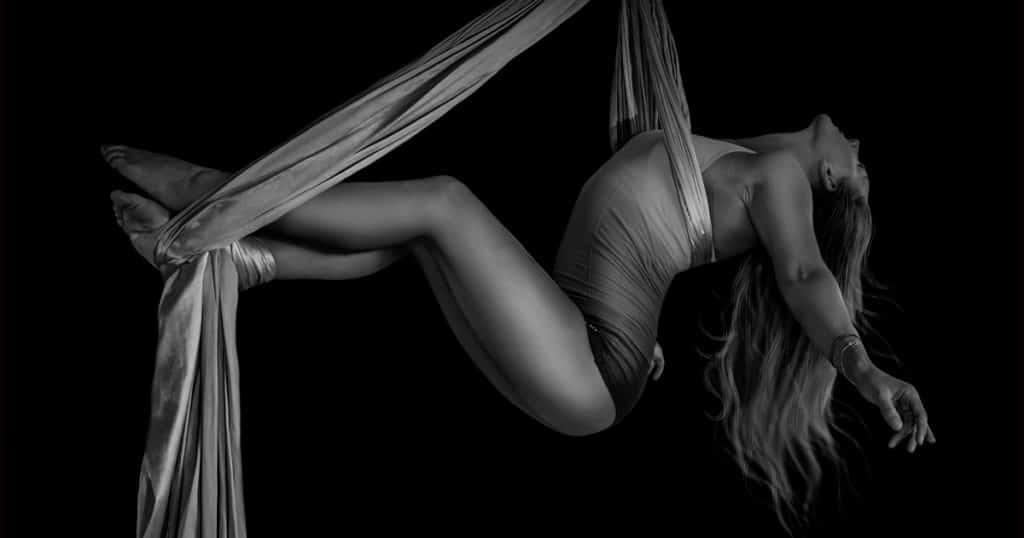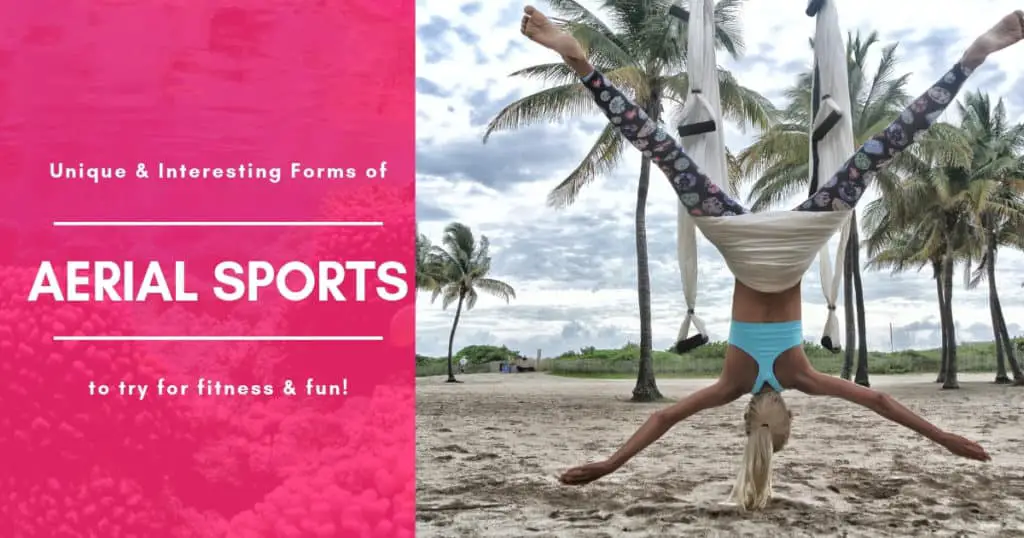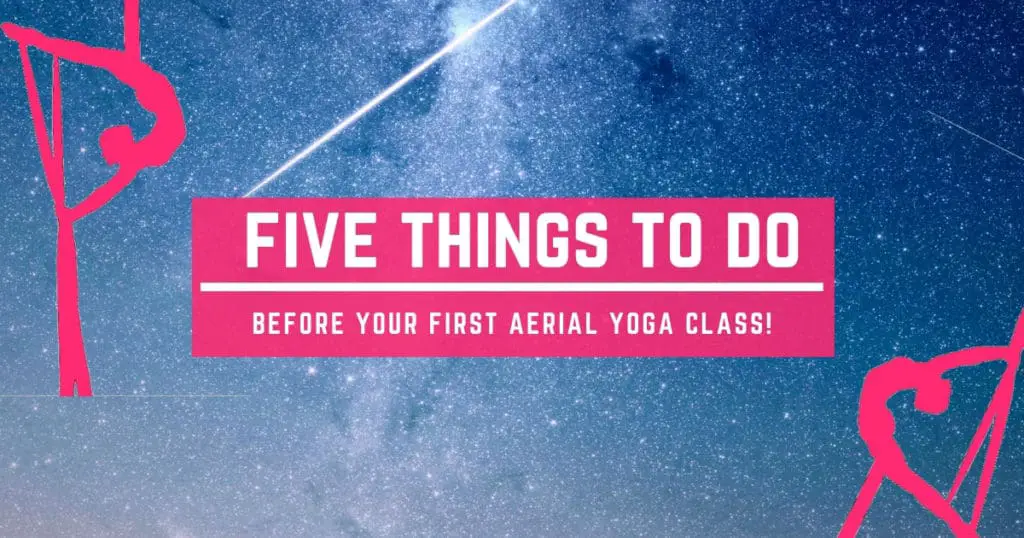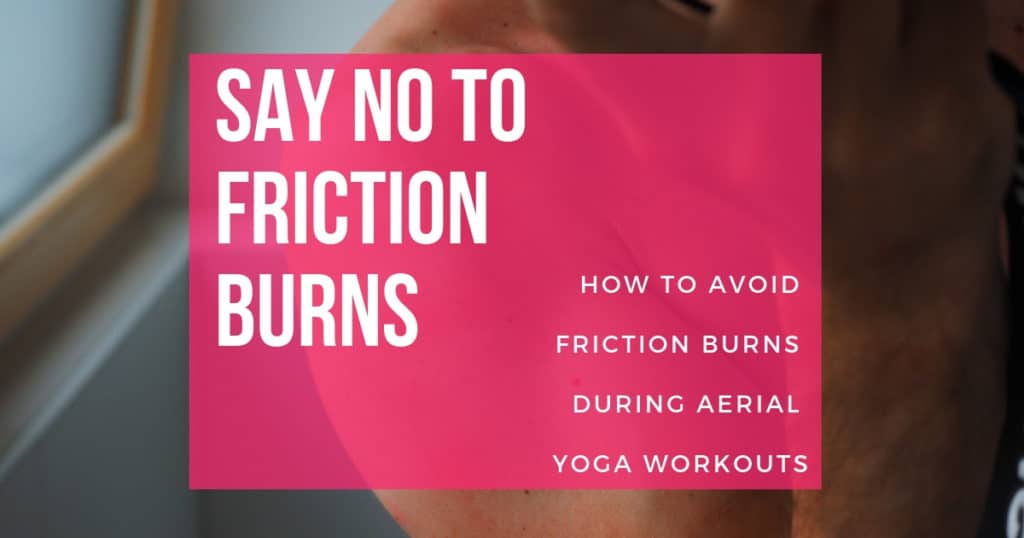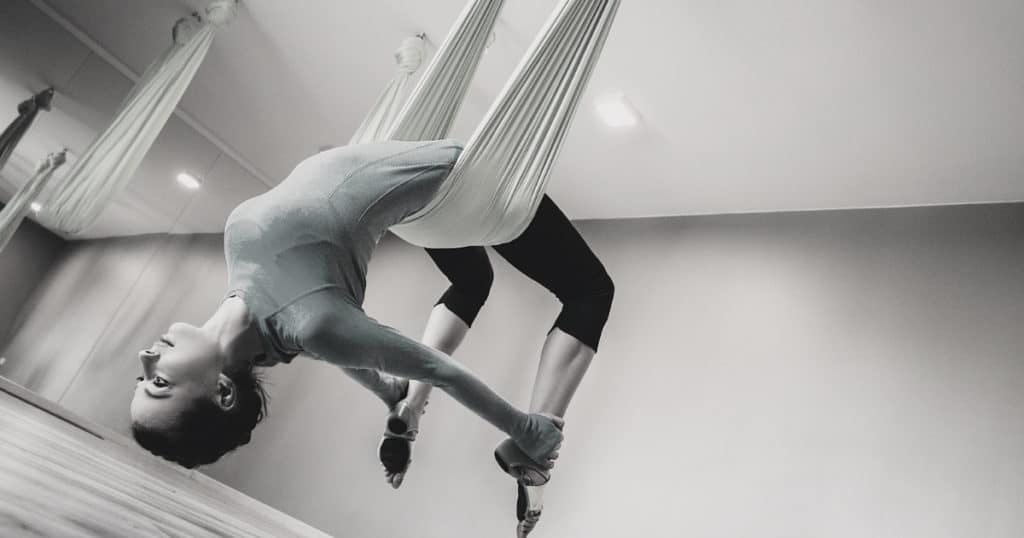Inversion yoga poses are a great way to stretch your body and mind. The benefits of inversion yoga are endless, it can help you relieve back pain, improve circulation, and increase your overall flexibility. As an added bonus, inversions also promote better sleep and digestion!
You don’t need an aerial yoga hammock or aerial silks at home for many of the poses mentioned in this article, many of them can be done on the floor with no specialist equipment at all.
But first, let’s explore some of the benefits of inversion yoga.
Spending time upside down, at the very least, gives us a new perspective on the world around us. As the blood rushes towards your head, enjoy the sensation and try to think of a problem from a different point of view.
Improved Circulation
Inversion poses help improve circulation to your head, which can aid in relieving headaches and stress. Gravity pulls blood away from the feet and legs, but inversions reverse that flow by inverting the body so gravity works against you.
Inversions have been shown to improve circulation to the brain in addition to helping relieve headaches and stress.
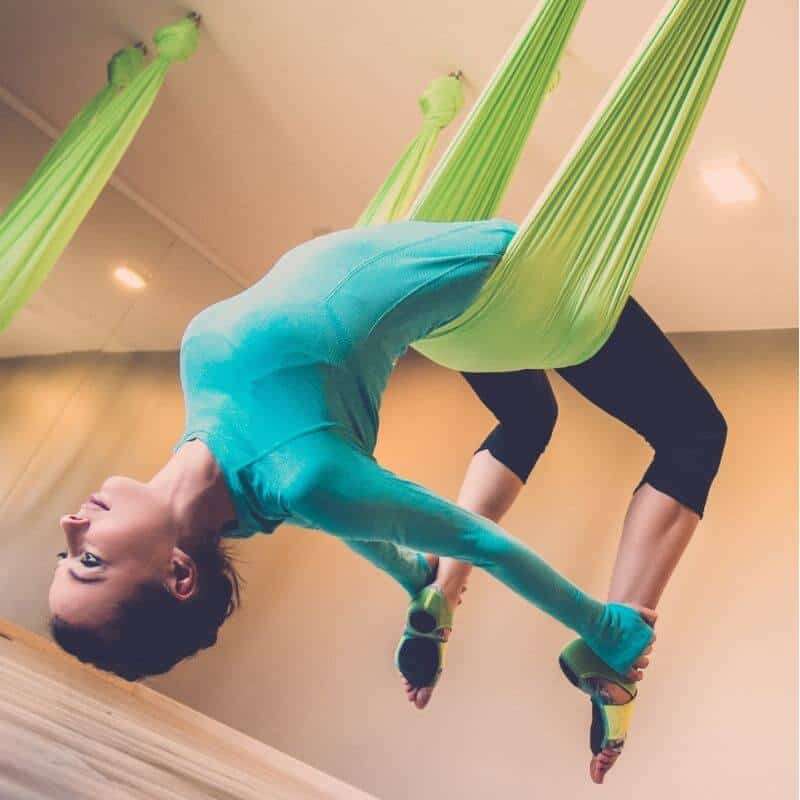
Overcoming Insomnia
Insomnia is a common problem among many people. The effects of insomnia can be very detrimental to your health and happiness, making it something you want to avoid at all costs. Luckily, inversion yoga is one of the best ways to combat insomnia and get better sleep.
Inversion poses involve hanging upside down on an inversion table or chair where gravity pulls your body into an inverted position. By being inverted, blood flow is directed away from the stomach towards the brain and heart, causing these organs to receive more oxygen while lessening some stress on these areas. This allows you to get deeper levels of relaxation when practicing inversions such as headstands or shoulder stands.
The following poses will help you improve sleep quality:
Headstands
These poses should be done for 60 seconds each with a 30 second break between sets (3 minutes total). It’s important not to overdo it though; don’t try too hard or force yourself into positions that aren’t comfortable for your body type!
The key to learning to do a headstand safely is to practice gradually and patiently. Start at home with a wall or chair: sit down with your back against an upright surface with your legs extended in front of you, then slowly raise yourself up until you’re standing with your back against the wall or chair. Hold the position for as long as possible. If you can’t do more than 10 seconds at first, that’s fine—just work up to longer periods of time until you reach 30 seconds (or longer if you’re able).
When you’re ready to start practicing outside of a wall/chair, stand up straight with good posture. Slowly bend forward from your hips, keeping your back straight and bending from your hip joints rather than rounding or arching your back.
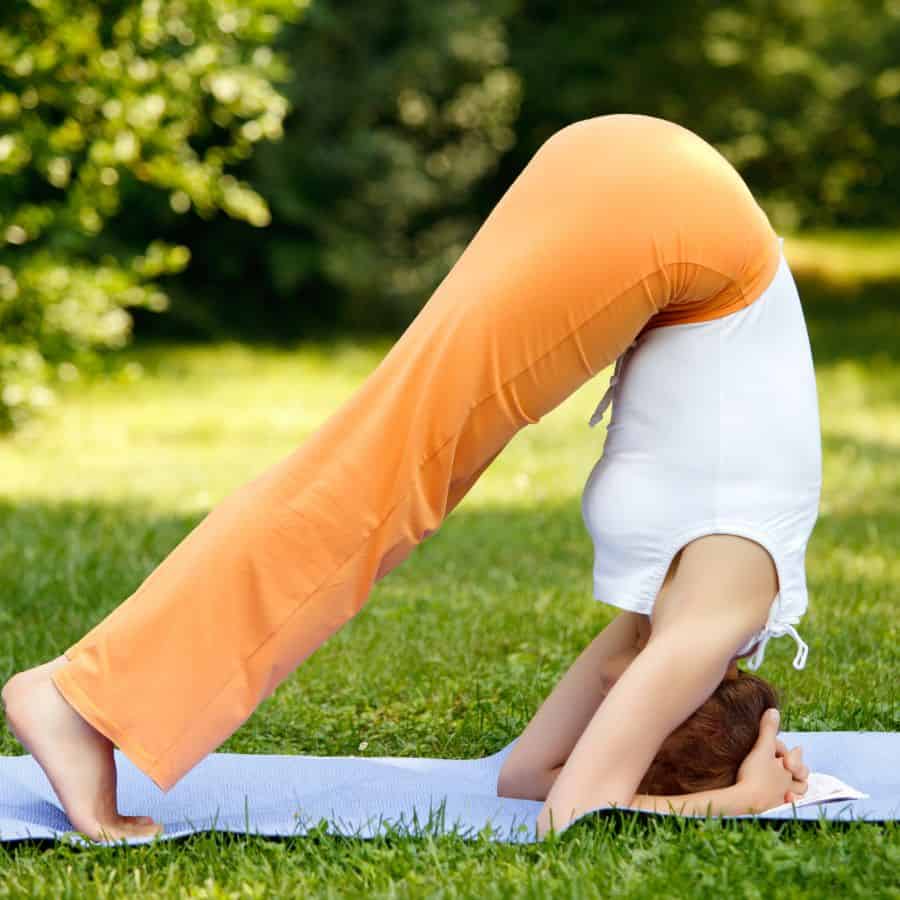
Inverted Lotus Pose (Urdva Padmasana)
You will need silks or a hammock for this one. The Inverted Lotus is a challenging pose that requires you to maintain a certain degree of flexibility and strength in your body. It’s also a very good arm balance because it requires you to have good control over the muscles in your arms, back, and core.
This pose can be very rewarding for its many benefits, but it is also quite unstable and requires you to feel comfortable with being upside down with no support.
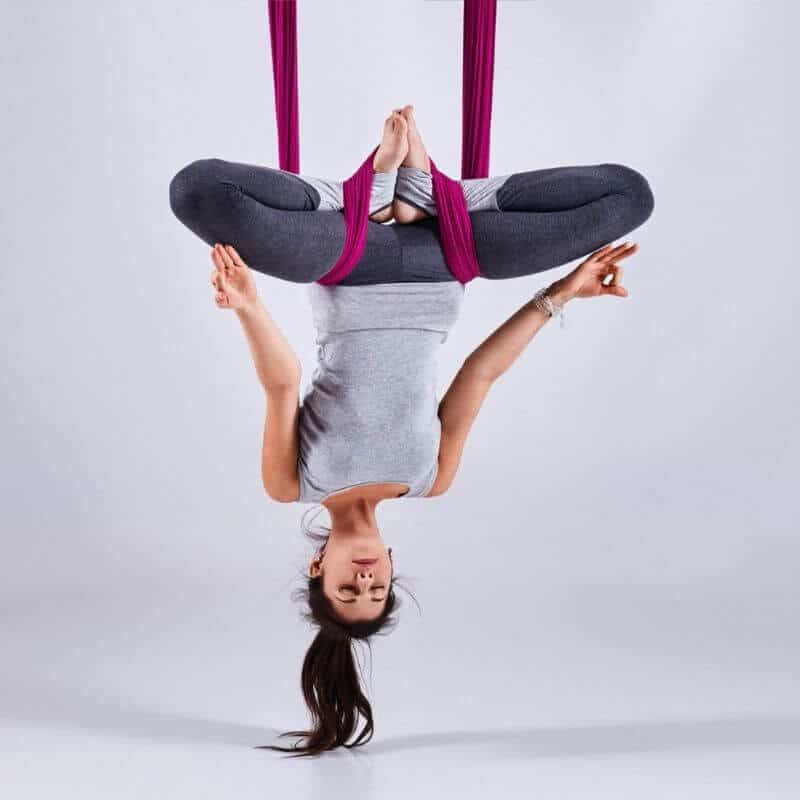
See also: Best Yoga Hammock for Home Use
Downward Facing Dog Pose (Adho Mukha Svanasana)
No silks needed this time! This is a classic yoga pose – the downward facing dog or Adho Mukha Svanasana is a staple for beginner yogis all over the world.
Downward Facing Dog, or Adho Mukha Svanasana, is a foundational yoga pose that can and should be done as part of any yoga routine. It’s a great way to warm up and prepare for more complex poses while also working your core, arms, back, and butt. However, when not done properly it can be dangerous.
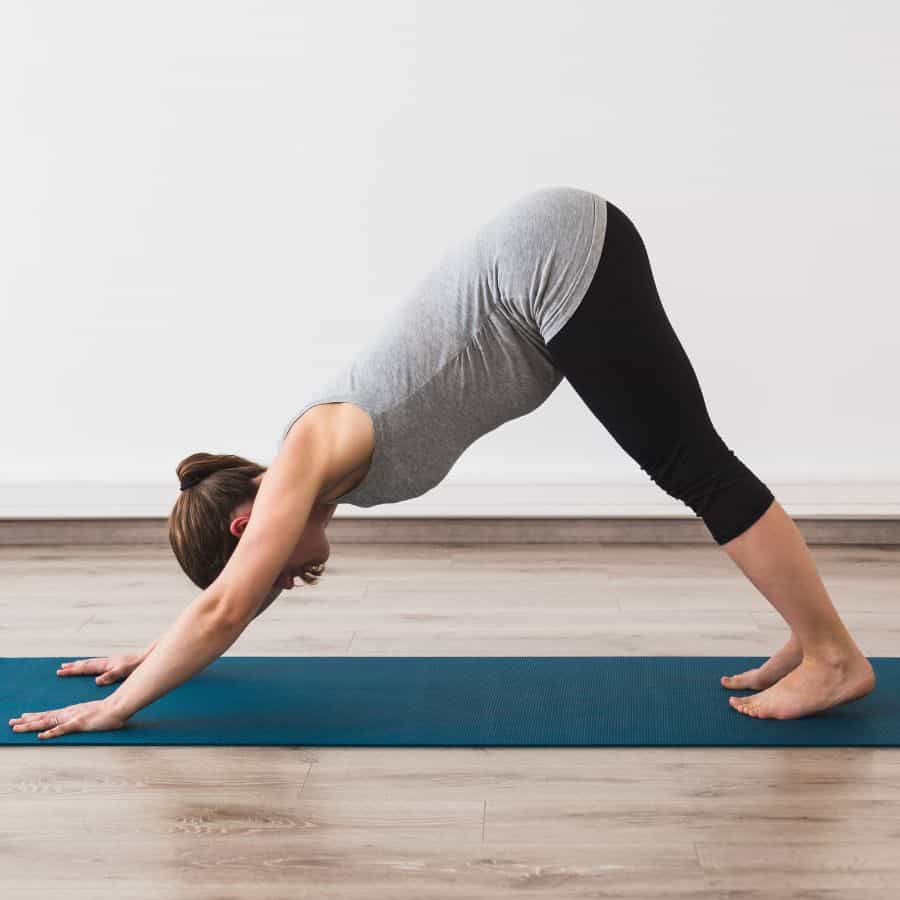
Here are some tips to stay safe while practicing Downward Facing Dog.
See also: Best Aerial Yoga Retreats for your Mind, Body & Soul
Keep your wrists in line with your shoulders
Make sure the tops of your hands are facing forward and the bottoms of your hands are facing up toward the ceiling.
This ensures that you’re not putting undue pressure on your wrists (which could cause strain) and it also keeps them in line with the wrist joint so you don’t put strain on your wrists as well.
Keep your elbows close to your body
Your elbows should be bent at about a 90 degree angle from your upper arm to forearm.
Press into the ground
Keep all four corners of each foot planted firmly on the ground to ensure you have good balance during this pose. If you start to lean forward or backward, you may fall over!
Better Posture
Good posture is important for your safety and health. Inversions, like the Shoulder Stand or Plow pose, help you improve your posture by stretching out tight muscles and strengthening weak ones. You can also get a great stretch in your back by practicing the Cobra pose for just a few minutes each day.
In addition to improving your overall flexibility, yoga is also great for helping you lose weight and feel more energized throughout each day.
The following poses will help you improve your posture:
Shoulder Stand
If you’re looking to challenge yourself, the Shoulder Stand yoga pose is a good place to start. It’s one of the most challenging inversions in yoga, and it requires a lot of strength and endurance in your upper body—especially your shoulders, neck, and hands.
You’ll need a mat and enough space to lie flat on your back with your arms overhead. Start by lying on your back with your knees bent, feet on the floor. Place your hands on either side of your head so that they’re supporting the weight of your head, and then use them to gently lift off the ground by straightening out your legs.
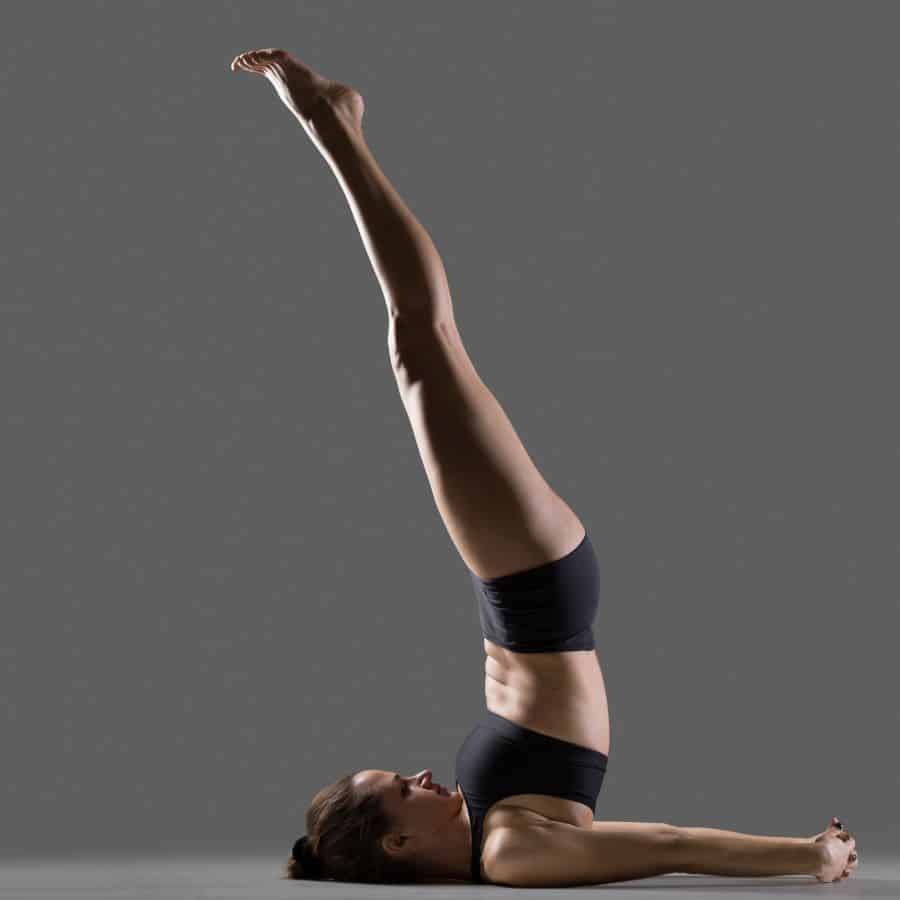
To come into the Shoulder Stand, first lift one leg up in the air and straighten it slightly so that you’re balancing on one foot and holding the other leg up with both hands. You’ll be using that lower leg and foot for balance throughout this pose, so you’ll want to keep it as strong as possible.
In order to get into the full Shoulder Stand pose, lift both legs up until they are perpendicular to the floor—this will require a lot more strength than it might at first seem like it would.
Inverted Star Pose
This pose is awesome because you can get a great stretch in your chest, inner arms, and shoulders. But it’s pretty advanced and not for the faint of heart. The inverted star is one of the more difficult poses in aerial yoga, but with enough dedication and practice, it can be done safely!
- Make sure you’re using a strong grip. Make sure that your elbows are locked with no bend.
- Don’t drop too fast from your shoulders! If you do, try lowering yourself even slower next time you practice this move to help build up strength in your core muscles.
- When lowering back down, make sure to keep your head tucked into your chest to avoid neck strain.
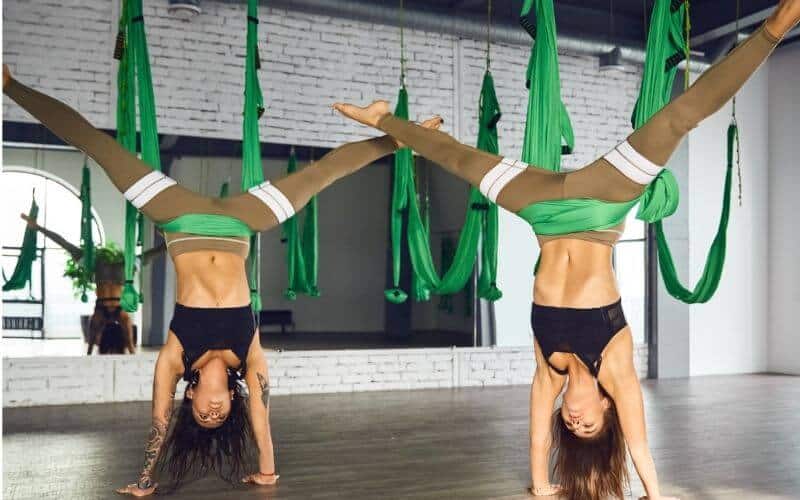
Back Pain Relief
Back pain is a common problem for many people, and the good news is that one of the benefits of inversion yoga is that it can help relieve those niggling types of pains. Inversion poses are often recommended for those with back problems because they allow gravity to work on the spine while helping you relax.
Inversions like headstands, handstands, shoulder stands and forearm balances all target different parts of your body depending on how you’re doing them. For example:
Arrow Pose
Arrow pose will help to strengthen your back muscles which are responsible for supporting your spine. This pose also stretches out the lower back area which is often tight after sitting all day at work or driving long distances in cars/buses/planes etc..
You could also stretch your arms down towards the floor, if you have enough height to do so.
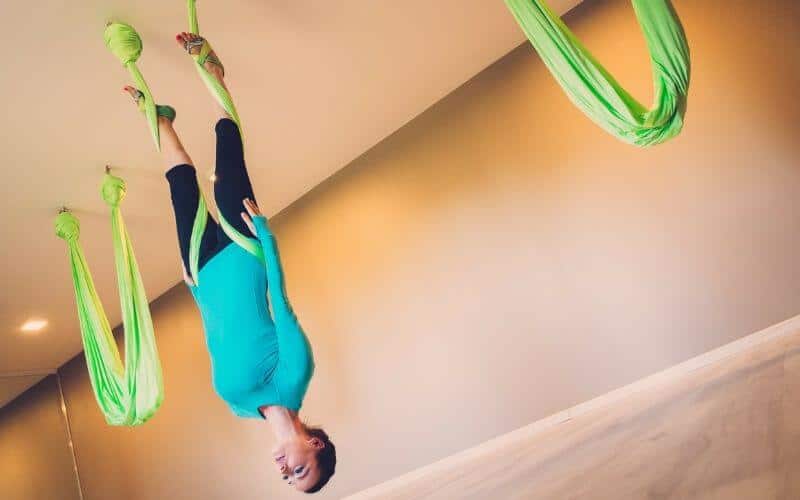
Promotes Lymphatic Drainage
Lymphatic drainage is the method by which your body transports fluids throughout your lymph system. It’s similar to how blood flows through veins; however, instead of returning nutrients and oxygen back to the heart, it helps take waste away from the area being drained.
This fluid can build up in areas where there’s inflammation or infection, causing swelling and pain. By promoting drainage of this excess fluid from these areas, your body can get rid of it more easily—allowing you to feel better sooner!
Inversion yoga is a great way to promote lymphatic drainage because you’re hanging upside down for a long period of time (which increases pressure on certain parts of your body). The added weight also increases the amount of pressure being put on those parts as well—so once again: excellent for promoting lymphatic drainage!
Improved Digestion and Mental Clarity
If you’re looking for a way to improve your digestion, relieve stress and anxiety, and improve brain function, inversion yoga may be a great option for you. While inversions have been practiced for thousands of years as a form of meditation (think the Buddha), it’s only been recently that research has shown the benefits to be far more than just mental clarity.
In fact, there are numerous studies that suggest regular inversion practice can help improve digestion by increasing blood flow to the digestive organs; relieve stress by relaxing the nervous system; sharpen focus and concentration by improving blood flow through oxygenation of the brain; and increase overall energy levels.
Inversion yoga poses can bring you many benefits.
Benefits include improved circulation, overcoming insomnia, better posture, back pain relief and more.
Inversion yoga poses are a great way to start your day as they help to stimulate digestion and get you energized for the day ahead. Inversions are also an effective way to improve lymphatic drainage which will leave you feeling refreshed after an inversion sequence is completed. If you suffer from any type of discomfort in your lower back then inverted postures will be a welcome relief as well as providing added strength to this area if done regularly over time.
Inversions are excellent for the mind too – with their calming effects on both body and spirit; inverted poses provide an opportunity for reflection and self-reflection which is especially useful when combined with meditation techniques such as mantra chanting or dharana (a form of concentration meditation).
Related: Is Aerial Yoga Safe?
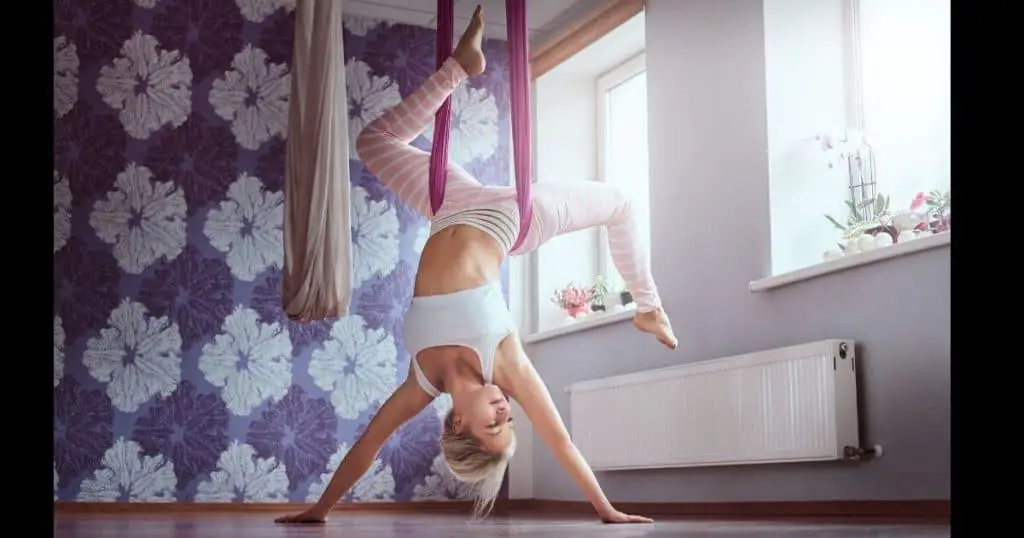
Conclusion
Inversion yoga is also known to be very soothing and calming, which makes them an excellent choice for people who suffer from anxiety and stress. Inversions are also a great way to improve your posture, which will help with back pain problems down the road. By practicing inversion yoga poses regularly, you’ll soon find that they have improved both your mental and physical health!
This article is tagged with:
